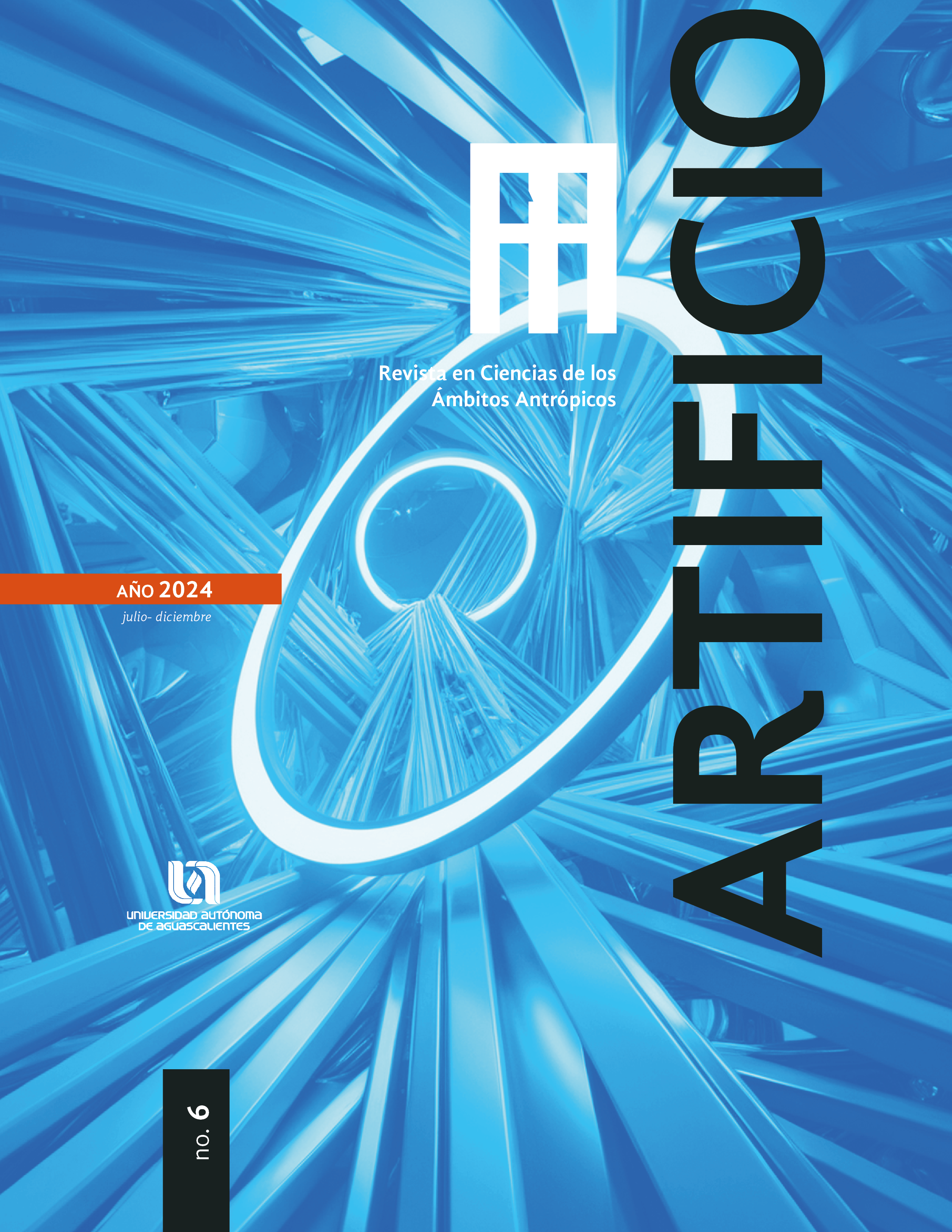Indoor Environmental Quality Requirements in Higher Education Classrooms
DOI:
https://doi.org/10.33064/artificio620247040Keywords:
Environmental design, thermal comfort, sustainable buildingAbstract
The current global climate and environmental situation has forced some countries to take action to address climate change and environmental impact through the development of technologies that allow for energy efficiency and sustainability in buildings, as this takes on particular relevance for its environmental importance and projection, as well as in actions to be considered in higher education spaces in the face of future pandemics.
While sustainability should be addressed from different fronts, the construction sector of educational spaces can play a relevant role in the country's strategy due to the potential for efficiency in energy and water consumption levels, all with the aim of facing environmental situations and health contingencies through sustainable building.
The environmental comfort is considered in this work from the climatic and lighting point of view, taking into account for study purposes the user of architecture in a specific region of semi-temperate climate, as well as their health conditions.
Downloads
References
Błazejczyk, K., Jendritzky, G., Bröde, P., Fiala, D., Havenith, G., Epstein, Y., Psikuta, A., & Kampmann, B. (2013). An introduction to the Universal thermal climate index (UTCI). Geographia Polonica, 86(1), 5–10. https://doi.org/10.7163/GPol.2013.1Bröde, P. (2022).
- DEG. (2022). Didascalia Educational Group. Reglamento de Instalaciones Térmicas en Edificios (RITE). Sevilla, España. Obtenido de:
https://didascalia.es/rite-la-ventilacion-natural-edificios/
- GIZ. (2013). NAMA apoyada para la Vivienda Sustentable en México. México: CONAVI.
- GIZ. (2016). Alianza Cambio Climático México-Alemania. Proyectos pilotos de la NAMA de Vivienda Nueva. Obtenido de: http://climate.blue/download/biblioteca_pronama/nama_vivienda_nueva/naa_vivienda_nueva_piloto/NAMA%20VN_GUADALAJARA.pdf
- Gómez A., A., & Gómez A., G. (2011). Habitabilidad, factor equiparable al desempeño ambiental para la sustentabilidad de la vivienda de interés social.VI Cátedra Nacional de Arquitectura. Carlos Chafón Olmos. Tamaulipas: Facultad de Arquitectura, Diseño y Urbanismo. Universidad de Tamaulipas.
- Gómez-Azpeitia, G. (2016). Caracterización climática, Universidad de Colima.
- Grupo Atelier. (2015). Proyecto Piloto: La NAMA de Vivienda Sustentable Mexicana. Guadalajara.
- Harvard. (2021). Fundación Schools for Health para la mejora de la salud de niños y jóvenes en el ámbito del colegio. Obtenido de:
(https://schools.forhealth.org, en español en bit.ly/guiaventilacion.
- IAM. (2017). Instituto de Astronomía y Meteorología. Universidad de Guadalajara. Obtenido de: http://www.udg.mx/tiempo_de_jalisco/ Última revisión 04 de Junio del 2017.
- Olgyay, V. (2006). Arquitectura y Clima. Manual de Diseño Bioclimático para Arquitectos y Urbanistas. Barcelona: Gustavo Gili.
-SENER. (2011). Secretaría de Energía. Norma Oficial Mexicana NOM-020-ENER-2011, Eficiencia energética en edificaciones. Envolvente de edificios para uso habitacional. México.
-Teledyne. (2019). Thermal Cameras Reveal How to Keep Your Home Cool During a Heat Wave. Obtenido de: https://www.flir.com/discover/professional-tools/thermal-cameras-reveal-how-to-keep-your-home-cool-during-a-heat-wave/
-Vázquez-Torres, C., Sotelo-Salas, C., Grajeda-Rosado, R. (2023). Percepción térmica en espacios urbanos patrimoniales. Caso de estudio: Guanajuato. Artificio 4(4), eD1-eD18.e-ISSN2992-7463Sitehttps://revistas.uaa.mx/index.php/artificio

Downloads
Published
Versions
- 2024-12-26 (2)
- 2024-12-19 (1)
How to Cite
Issue
Section
License
Copyright (c) 2024 Artificium

This work is licensed under a Creative Commons Attribution-NonCommercial-ShareAlike 4.0 International License.
La Revista Artificio proporciona un acceso abierto a su contenido, basado en el principio de que ofrecer un acceso libre a las investigaciones ayuda a incrementar el intercambio global del conocimiento. Artificio no cobra ni cobrará ningún cargo a sus lectores por concepto de suscripción, ni a los autores por enviar, procesar o publicar sus artículos.
Como condición de publicación, los autores acuerdan liberar sus derechos de autor bajo una licencia compartida, específicamente la licencia de Creative Commons Reconocimiento-NoComercial-Compartir Igual 4.0 Internacional
Esta licencia permite a cualquier persona compartir, copiar y redistribuir el material en cualquier medio o formato bajo los siguientes términos:
*Dar crédito al autor del texto
*No hacer uso del material con propósitos comerciales
*No transformar o modificar el material.










